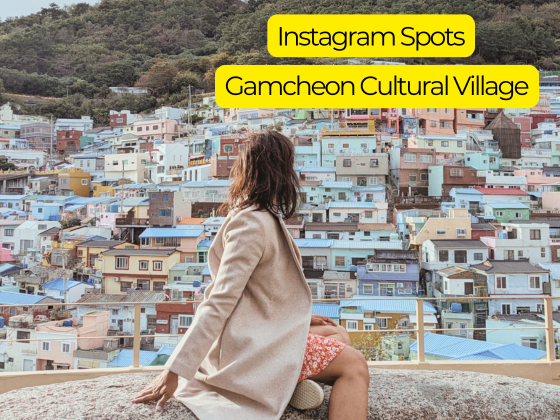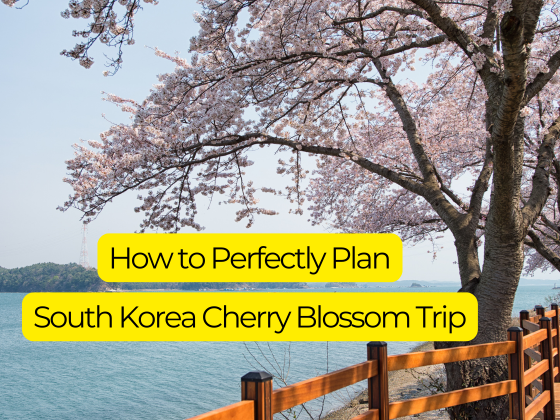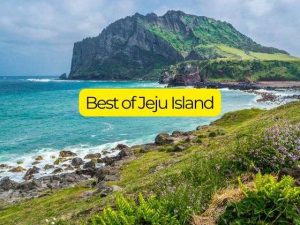
Best Jeju Island 2 to 4 Day Itinerary
Estimated reading time: 17 minutes
Are you looking for the best places in Jeju to visit on your next trip? Or simply confused about whether Jeju Island is even the right place for you? Here’s my detailed and realistic Jeju island itinerary. I will show you how to explore Jeju Island in 4 days, with or without a car. This Jeju island itinerary will help you plan the perfect trip to Korea’s Hawai!
Also, did you know Indian passport holders can stay for up to 30 days without a visa in Jeju island? All the more reasons to consider this brilliant destination for your next holiday.
Here’s a map that shows the location of the attractions and activities on our Jeju travel itinerary. You can click on the icons to see more details and directions.
How many days should I spend on a Jeju Island itinerary?
The ideal duration for a Jeju travel itinerary depends on your interests, travel pace, and the activities you want to include. However, to fully appreciate the beauty and diversity of Jeju Island, the suggested duration is around 4 days. Of course, the more the better, you can easily spend one week on Jeju island exploring it at a leisurely pace.
2 Days for Key Attractions: Spend the first two days exploring the must-see attractions, such as Hallasan National Park, Seongsan Ilchulbong Peak, Manjanggul Cave, and the scenic beaches.
1 Day for Cultural Experiences: Allocate a day to immerse yourself in the island’s culture. Visit places like Jeju Folk Village, and Jeju Stone Statue Park.
1 Day for Relaxation: Dedicate a day for relaxation and fun. Enjoy the beautiful beaches, perhaps engage in outdoor activities like hiking or water sports, and explore local markets.
If you have more time you can keep a day or two flexible for spontaneous discoveries or to revisit places you particularly enjoyed. Jeju has many hidden gems, and allowing some unplanned time can add to the adventure.
Planning a trip to South Korea? Join me on an all-women group trip to South Korea!
What is the best time to visit Jeju Island?
The best time to visit Jeju Island depends on your preferences and what you want to see and do. However, a popular time to visit is autumn, which is from September to November. During this time, the weather is mild, the fall foliage is stunning, and the island is less crowded than in summer.
Spring in Jeju Island (March to May):
- Weather: Mild temperatures, blooming flowers, and lush greenery.
- Attractions: Ideal for outdoor activities, hiking, and enjoying the vibrant cherry blossoms.
Summer in Jeju Island (June to August):
- Weather: Warm to hot temperatures.
- Attractions: Great for beach activities, water sports, and exploring the coastal areas. Summer is the peak tourist season.
Fall in Jeju Island (September to November):
- Weather: Mild temperatures, cool evenings.
- Attractions: Beautiful fall foliage, making it a picturesque time for hiking and outdoor exploration. The island is less crowded compared to the summer.
Winter in Jeju Island (December to February):
- Weather: Cool to cold temperatures, occasional snowfall.
- Attractions: Winter is less crowded, and you can enjoy a quieter experience. Hallasan Mountain may have snow, offering a unique landscape.
When finalising your Jeju travel itinerary keep these considerations in mind
- If you prefer a lively atmosphere and warmer weather, visiting during the summer months is ideal. However, be prepared for higher accommodation prices and more crowds.
- Fall and spring offer milder weather and fewer tourists, making it a great time for a more relaxed visit.
- Check for any local festivals or events that align with your interests, as these can enhance your overall experience.

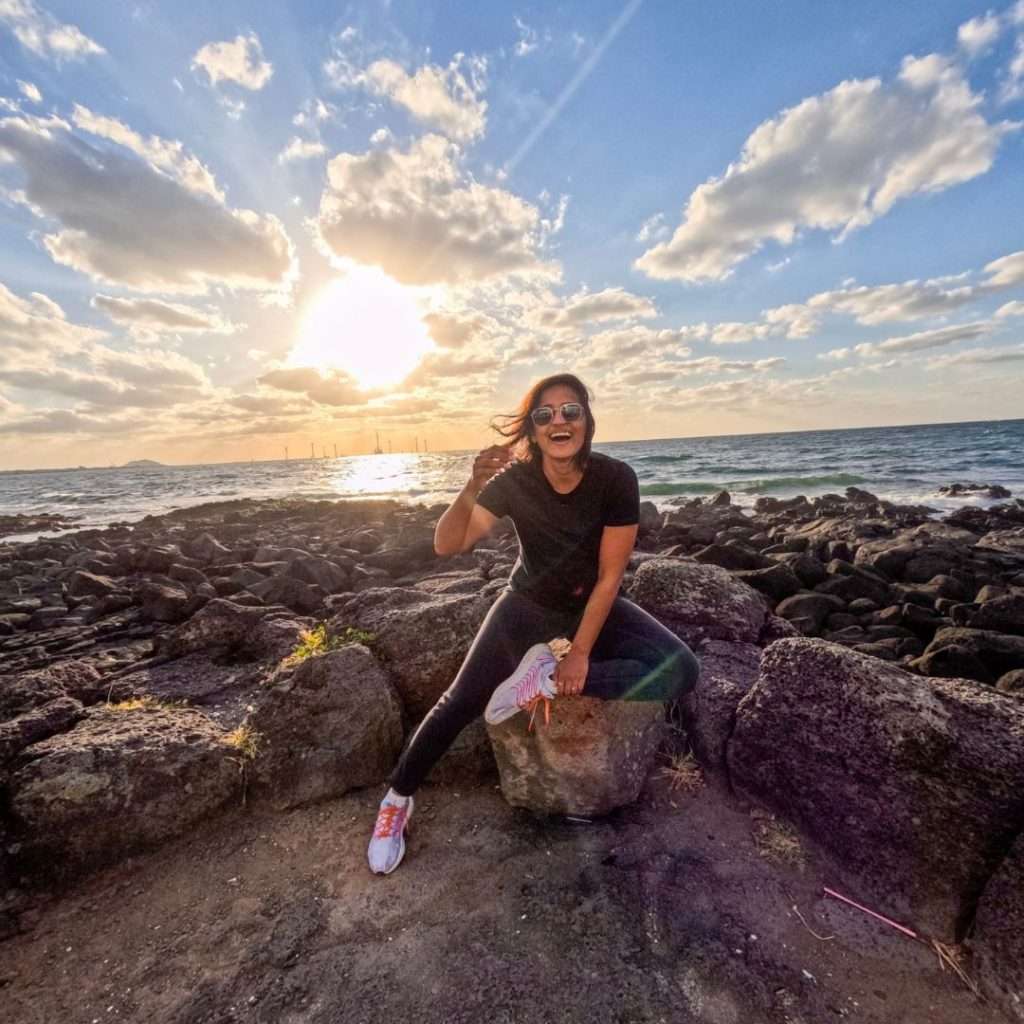
What are the transportation options on Jeju Island?
This was the trickiest part of my Jeju island trip. Now, South Korea has a brilliant public transport system, and throughout my stay, I didn’t feel the need to hire a cab. I thrived on the metro and buses. However, that quickly changed on Jeju island. So if you are wondering how to get around Jeju Island, here’s a breakdown:
1. Public Buses
If you don’t want to drive, you can also use public transport, such as buses and taxis. Jeju Island has a decent bus network that covers most of the island, but the frequency and reliability may vary depending on the route and season. Especially if you are venturing outside of Jeju City.
If you are pressed for budget, do not worry, you will be able to travel on the cheap. However, you will also take loads more time to get from one place to another.
You can use the Jeju Bus app or the Naver Maps app to check the bus schedules and routes. The average bus fare is around 1,200 KRW ($1) per ride. You can pay with cash or a T-money card, which is a rechargeable transportation card that you can use in most of Korea.
2. Rental Cars
The most convenient and flexible option is to rent a car, which gives you the freedom to explore the island at your own pace and schedule. You can rent a car at the airport or online, and the average cost is around 50,000 KRW ($45) per day. You’ll need an international driving permit and a credit card to rent a car in Korea.
This is even better if you do not like to join a group tour. Hiring a car gives you flexibility and also gives you more scope to explore the island better. You can easily go to remote areas without the hassle of waiting for a bus.
I recommend Discover Cars for rental car services in Jeju island.
3. Taxis
Taxis are another option to get around Jeju Island, especially if you’re travelling in a group or just want to save time. They are easy to find at the airport, bus terminals, and tourist spots, or you can call one using the Kakao Taxi app. The average taxi fare is around 3,000 KRW ($2.7) for the base fare, plus 1,000 KRW ($0.9) per kilometre. You can pay with cash or a credit card.
Jeju Island Tours
One of the best ways to enjoy the best places in Jeju is to join one of the many tours. Three main tours cover the different regions and Jeju island attractions- the West Tour, the East Tour, and the South Tour. All these tours cater to vegetarian dietary requirements, find the booking links for each of the tours below.
Each tour has a fixed schedule and route and includes pick up and drop off, an English-speaking guide, lunch, and entrance fees. Here are the links to the tours I booked online. Note the self-drive route shared below may differ from what the tours offer.
Takes you to the relaxing and romantic attractions of West Jeju. Such as Hyeopjae Beach, Hallim Park, Osulloc Tea Museum, and Camellia Hill.
Takes you to the scenic and cultural attractions of East Jeju. Such as Seongsan Ilchulbong, Seopjikoji, Seongeup Folk Village, and Udo Island.
Takes you to the natural and adventurous attractions of South Jeju. Such as Hallasan National Park, Jeongbang Waterfall, Oedolgae Rock, and Jeju Shinhwa World.
By joining these tours, you can make the most of your Jeju travel itinerary without worrying about transportation, navigation, or logistics.
Day 1: Arrival and Jeju City
Arrival and Jeju City After checking in to your accommodation. Start exploring some of the best places in Jeju that are located in Jeju City. Jeju City is a vibrant and lively city that has a mix of traditional and modern culture.
Here are some of our recommendations for what to do in Jeju City:
Jeju Folklore and Natural History Museum
A great place to learn about the history, culture, and nature of Jeju Island. The museum has four exhibition halls that display various artefacts, models, and dioramas that showcase the life and environment of Jeju Island. You can see how the people of Jeju lived, worked, and played, as well as how the island was formed by volcanic activity. It also has a botanical garden and a folk village, a Jeju island attraction that you should not miss.
Yongduam Rock
This has to be one of the most iconic landmarks of Jeju Island, a volcanic rock formation that resembles a dragon’s head. The name Yongduam means “dragon head rock” in Korean, and according to legend, the rock was once a dragon that was shot down by a mountain god. Located on the coast of Jeju City, you can enjoy the views of the sea and the sky from there. It is also a great place to pick some souvenirs and try seafood restaurants nearby. The rock is one of the things to do in Jeju that you can enjoy for free.

Dongmun Traditional Market
This is the largest and oldest traditional market in Jeju Island and a must-visit for food lovers. The market has loads of stalls that sell fresh and local produce, such as seafood, fruits, vegetables, meat, and snacks. You can find some of the specialities of Jeju Island, such as black pork, tangerines, abalone, and chocolate. A great place to taste some of street food, such as hotteok, mandu, and bibimbap. The market is one of the things to do in Jeju that will satisfy your appetite and your curiosity.
Jeju NANTA Theatre
This is a spectacular performance of music, comedy, and acrobatics, that will keep you entertained and amazed. NANTA is a Korean word that means “to strike”, and the show is based on the concept of cooking. The performers use various kitchen utensils, such as knives, pots, and pans, to create rhythmic and humorous sounds and movements. The show also involves audience participation and interaction, making it fun and engaging. It lasts for 90 minutes, and the ticket price is 50,000 KRW ($45) for adults, 40,000 KRW ($36) for students, and 30,000 KRW ($27) for children. You can book your tickets online or at the box office.
Day 2: East Jeju
The second day of our Jeju travel itinerary takes us to the east side of Jeju Island. Which is known for its scenic and cultural Jeju island attractions. East Jeju has some of the most stunning natural wonders, such as volcanoes, waterfalls, caves, cliffs, and beaches.
If you are hiring a taxi or renting a car here are some of the best places in Jeju that you can include in your itinerary:
Seongsan Ilchulbong
An impressive landmark of Jeju Island, a volcanic crater that rises from the sea. The name Seongsan Ilchulbong means “Sunrise Peak” in Korean, and it’s a popular spot to watch the sunrise over the horizon. The crater is about 180 metres high, and you can hike to the top in about 30 minutes. The view from the top is breathtaking, as you can see the ocean, the island, and the surrounding landscape. If you happen to be here, stop by the Haneyo Women Diver performance which occurs around 2:00 PM. It is one of the things to do in Jeju that you should not miss.

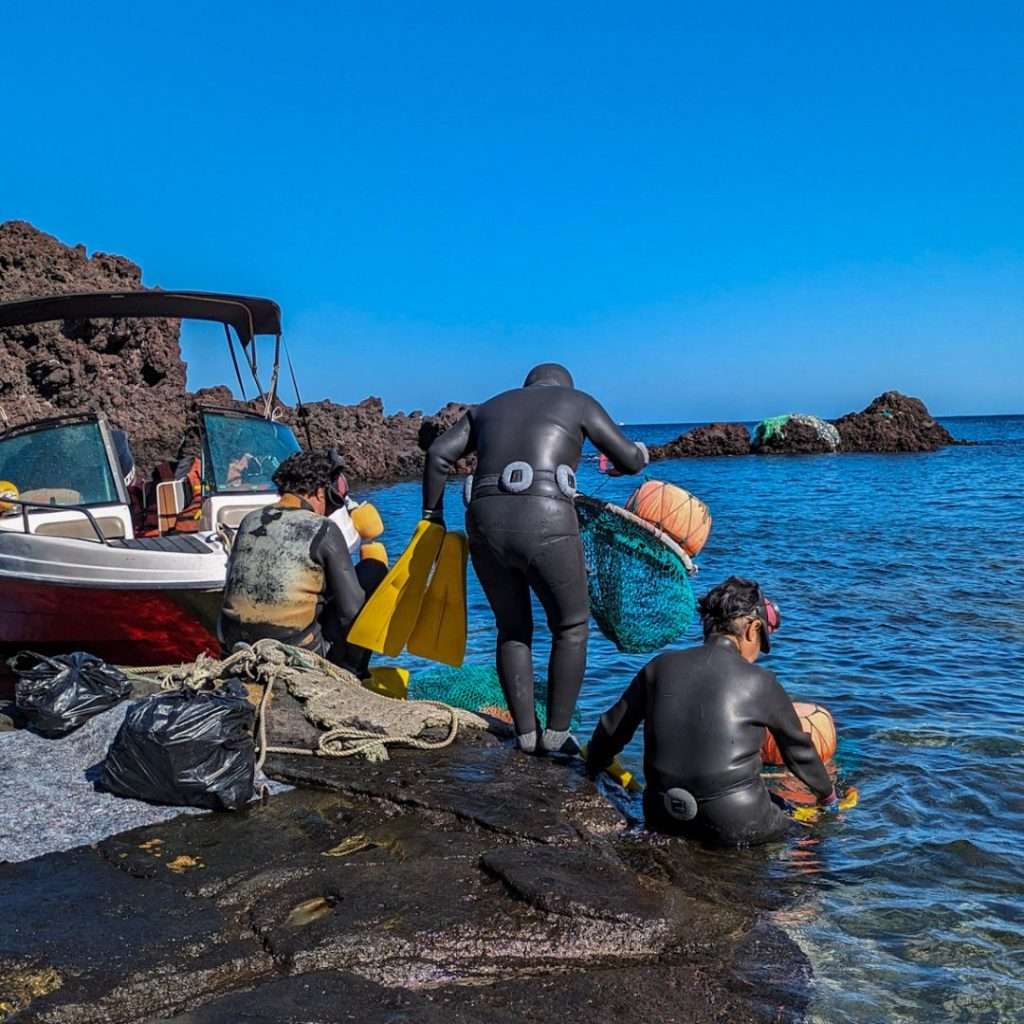
Seopjikoji
A beautiful and picturesque coastal area that has green fields, cliffs, and lighthouses. The name Seopjikoji means “a cape where a cow lies” in the Jeju dialect, and according to legend, a cow that was grazing here fell into the sea and became a rock. The area is also famous for being a filming location for some Korean dramas and movies, such as “All In” and “Seopyeonje”. You can walk along the trails and enjoy the views of the sea and the sky, or visit some of the attractions, such as the Seopjikoji Lighthouse, the Aqua Planet Jeju, and the Haenyeo Museum. The area is one of the things to do in Jeju that you can enjoy for free.
Seongeup Folk Village
A traditional village that preserves the authentic lifestyle and culture of Jeju Island. The village has over 100 houses that are made of stone, wood, and straw and are surrounded by stone walls. The village also has some cultural and historical sites, such as the Confucian school, the fortress, the shrine, and the tomb. You can see how the people of Jeju lived, worked, and played, as well as experience some of their customs and traditions, such as folk music, folk games, and folk food. The village is one of the Jeju island attractions that you should not miss.
Udo Island
A small island located off the coast of East Jeju, and is accessible by ferry from the Seongsan Port. The name Udo means “cow island” in Korean, and the island resembles a cow lying down. The island is a popular destination for its white sand beaches, lava caves, and peanut farms. You can explore the island by bike, scooter, or bus, and visit some of the attractions, such as the Udo Lighthouse, the Udo Sanho Beach, and the Udo Submarine Cave. It is also a great place to snorkel, fish, and kayak. The island is one of the things to do in Jeju that you can enjoy on a day trip.
Day 3: South Jeju
The third day of our Jeju travel itinerary takes us to the south side of Jeju Island. Which is known for its natural and adventurous Jeju island attractions. South Jeju has some of the most amazing natural wonders, such as mountains, waterfalls, rocks, and forests.
If you are hiring a taxi or renting a car here are some of the best places in Jeju that you can include in your itinerary:
Hallasan National Park
This is the crown jewel of Jeju Island, a national park that covers the Hallasan Mountain, the highest mountain in South Korea. The mountain is also a dormant volcano and has a crater lake at the top. The park has various trails and routes that are suitable for different levels of hikers, and offer stunning views of the mountain and the island. The park is one of the things to do in Jeju that you should not miss. The guided tours take you on a trail with which you can view the crater from binoculars. I went to the summit by myself and will share a detailed guide on how to climb Mt. Hallasan soon on the blog. Subscribe and stay tuned.

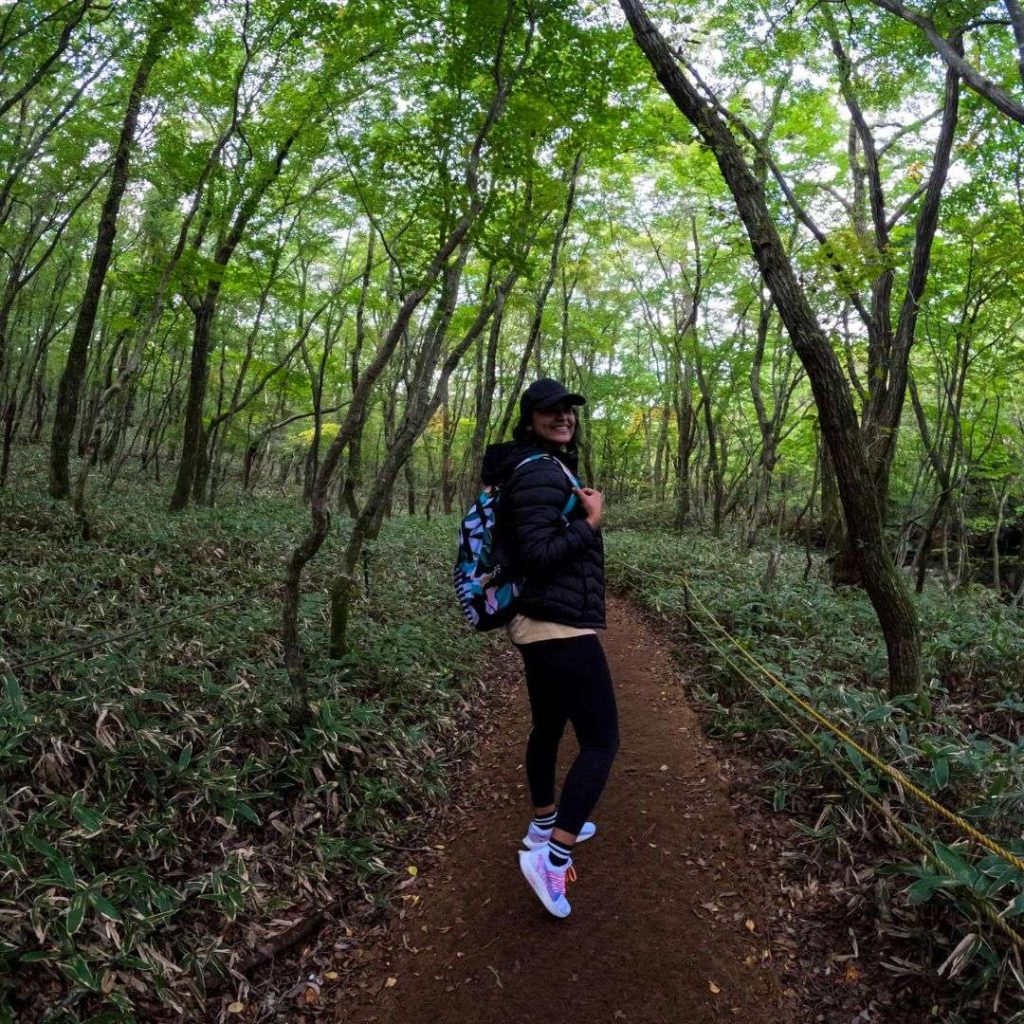
Jeongbang Waterfall
This is apparently the only waterfall in Asia that falls directly into the ocean. A random fact, but who would have thought? The waterfall is about 23 metres high and creates a spectacular sight. You can’t swim here but can walk down to the base of the waterfall and feel the spray of the water, or take a photo with the inscription “Seobulgwacha”, which means “Seobul passing by” in Korean and refers to a mythical figure who visited the waterfall.

Oedolgae Rock
Another majestic and mysterious rock formation that stands in the middle of the sea. The name Oedolgae means “lonely rock” in Korean, and according to legend, the rock was once a grandmother who waited for her husband who went to sea and never returned. You can view the rock from the shore, or walk along the coastal path that leads to the Sammaebong Peak, which offers panoramic views of the sea and the island. The rock is one of the things to do in Jeju that you can enjoy for free.
Jeju Shinhwa World
This is the largest and newest theme park on Jeju Island, which features rides, shows, and attractions for all ages. The park has four zones, each with a different theme and style, such as the Shinhwa Theme Park, the Lionsgate Movie World, the Shinhwa Water Park, and the Shinhwa Resort. You can enjoy some of the thrilling and fun rides, such as the roller coasters, the water slides, and the VR experiences. The park is one of the Jeju Island attractions that will make your day memorable. The park is open from 10 am to 10 pm, and the ticket price varies depending on the zone and the season. You can book your tickets online or at the gate.
Day 4: West Jeju
West Jeju The fourth and final day of our Jeju travel itinerary takes us to the west side of Jeju Island. Which is known for its relaxing and romantic Jeju island attractions. West Jeju has some of the most beautiful and serene beaches, parks, and gardens, as well as some of the most delicious tea.
If you are hiring a taxi or renting a car here are some of the best places in Jeju that you can include in your itinerary:
Hyeopjae Beach
This is one of the most beautiful beaches in Jeju Island, which has clear water and white sand. The beach is also famous for its emerald colour, which is caused by the reflection of the sunlight on the seaweed. Come here to relax and sunbathe on the beach, or swim and snorkel in the water. You can also find some facilities and amenities, such as showers, restrooms, cafes, and camping sites.
Hallim Park
This is a large park that has various gardens, caves, and sculptures. The park is divided into nine themed zones. They are the Palm Tree Road, the Subtropical Botanic Garden, the Jeju Stone and Bonsai Garden, and the Water Garden. If you are doing this on your own, you can also visit some of the other Jeju island attractions like- Hyeopjaegul and Ssangyonggul Caves, which are lava tubes that have stalactites and stalagmites, and the Folk Village, which has traditional houses and folk performances.

Osulloc Tea Museum
Tea culture is synonymous with Korea, so a visit to a tea Museum is only fitting. The museum has various exhibits and displays that explain the origin, production, and benefits of tea. Take this time to taste some of the finest tea products, such as green tea, black tea, oolong tea, and herbal tea, as well as some tea snacks. Also a great place to take some gifts for friends and family.
Camellia Hill
A botanical garden that has over 6,000 camellia trees and flowers, which are native to Jeju Island. The best time to visit Camellia Hill is November to April if you are visiting for Camellia blooms. The garden also has other plants and flowers, such as hydrangeas, cherry blossoms, and roses. It is a fun activity, especially for families. The garden is particularly beautiful during the blooming season.

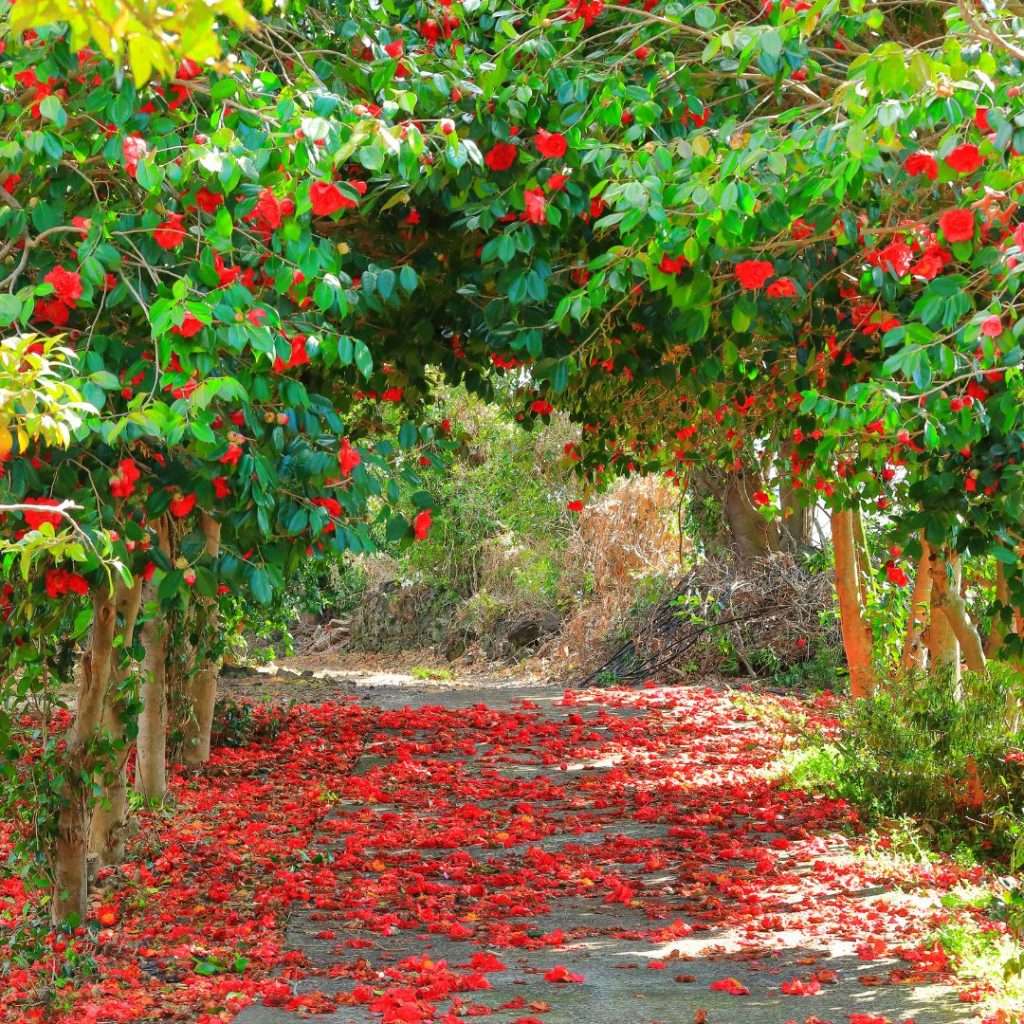
If you are planning a trip to South Korea read also:
Fall Foliage in South Korea, Your Guide to the Best Autumn Hikes and Views
A Guide to Gamcheon Culture Village in Busan
I hope you have your wanderlust roaring after reading my guide on the best places in Jeju. And it helped you figure out the top Jeju attractions, must-do activities in Jeju, and the perfect travel itinerary for Jeju Island. Trust me, Jeju is like a dreamland for folks who crave nature, culture, and a bit of adventure.
